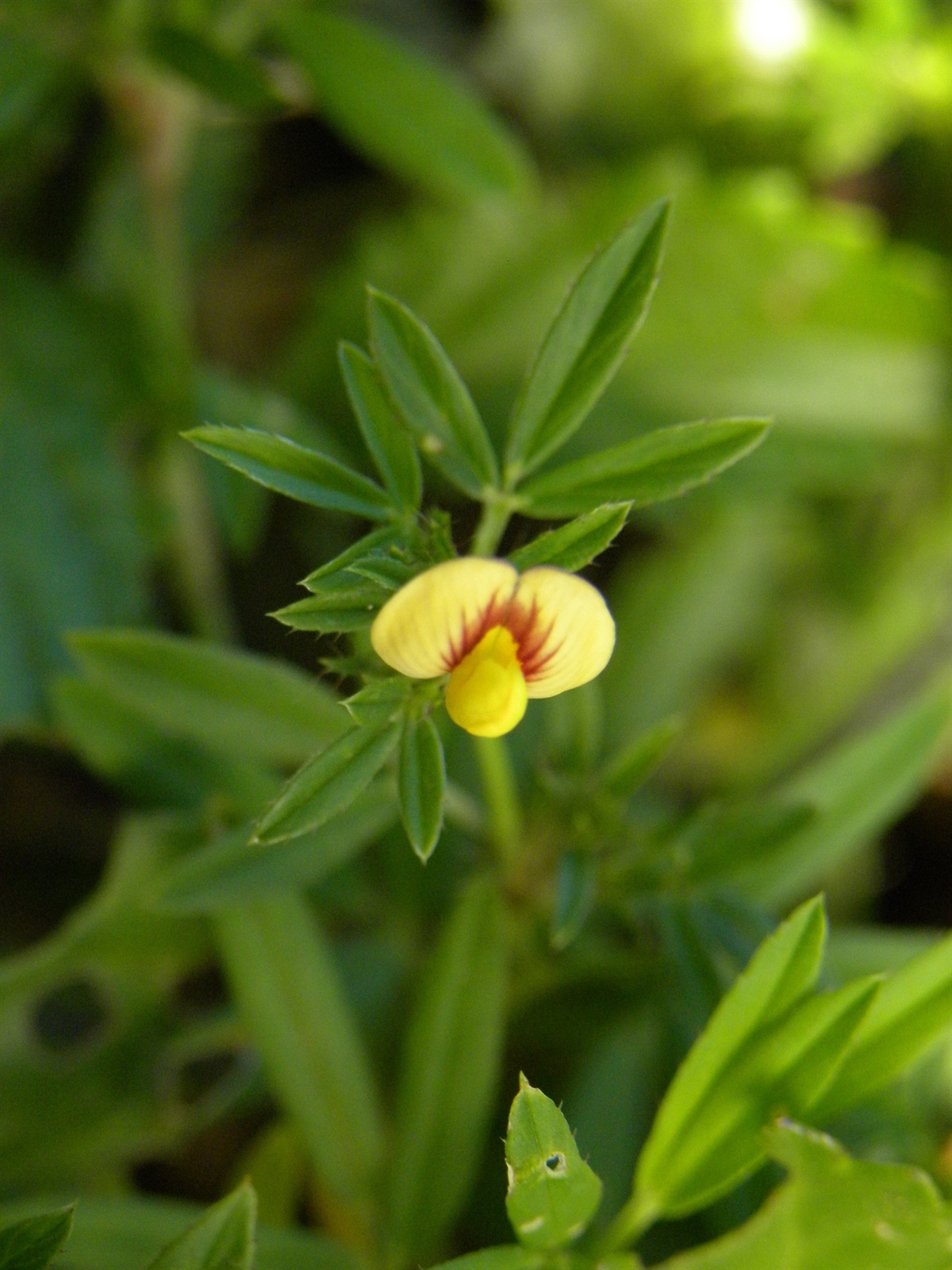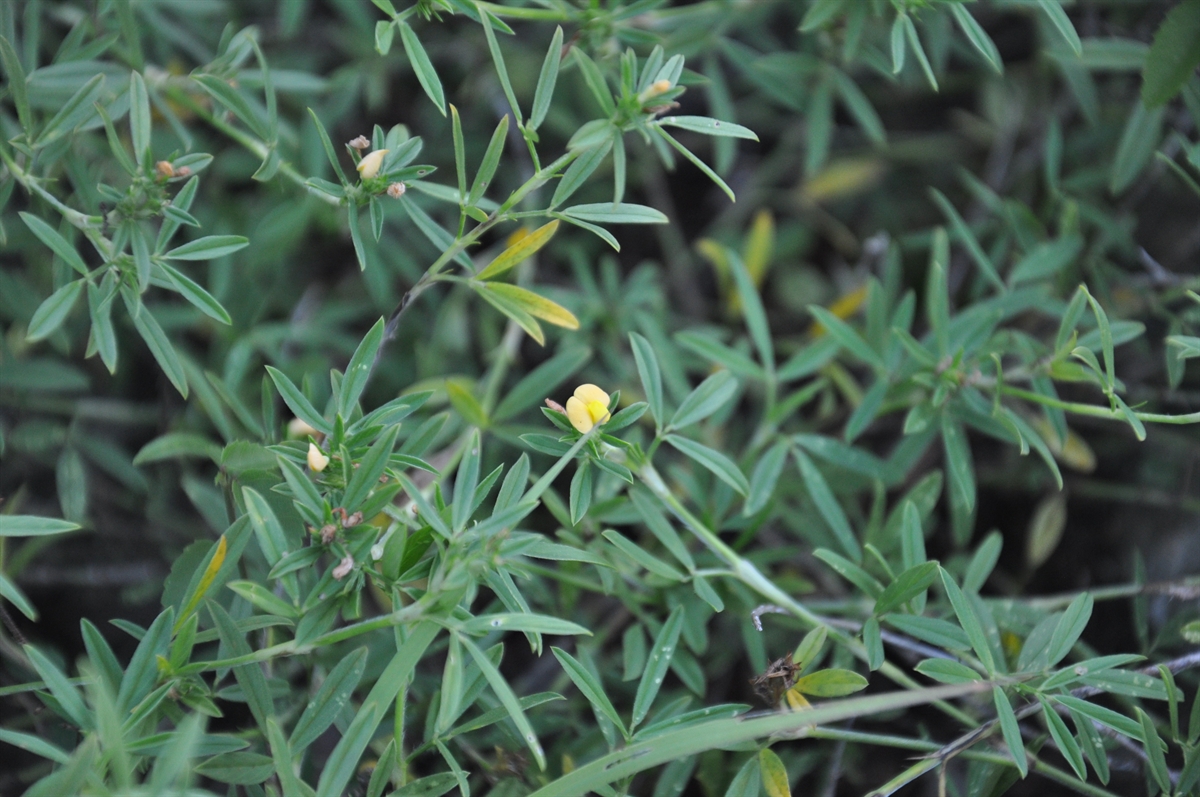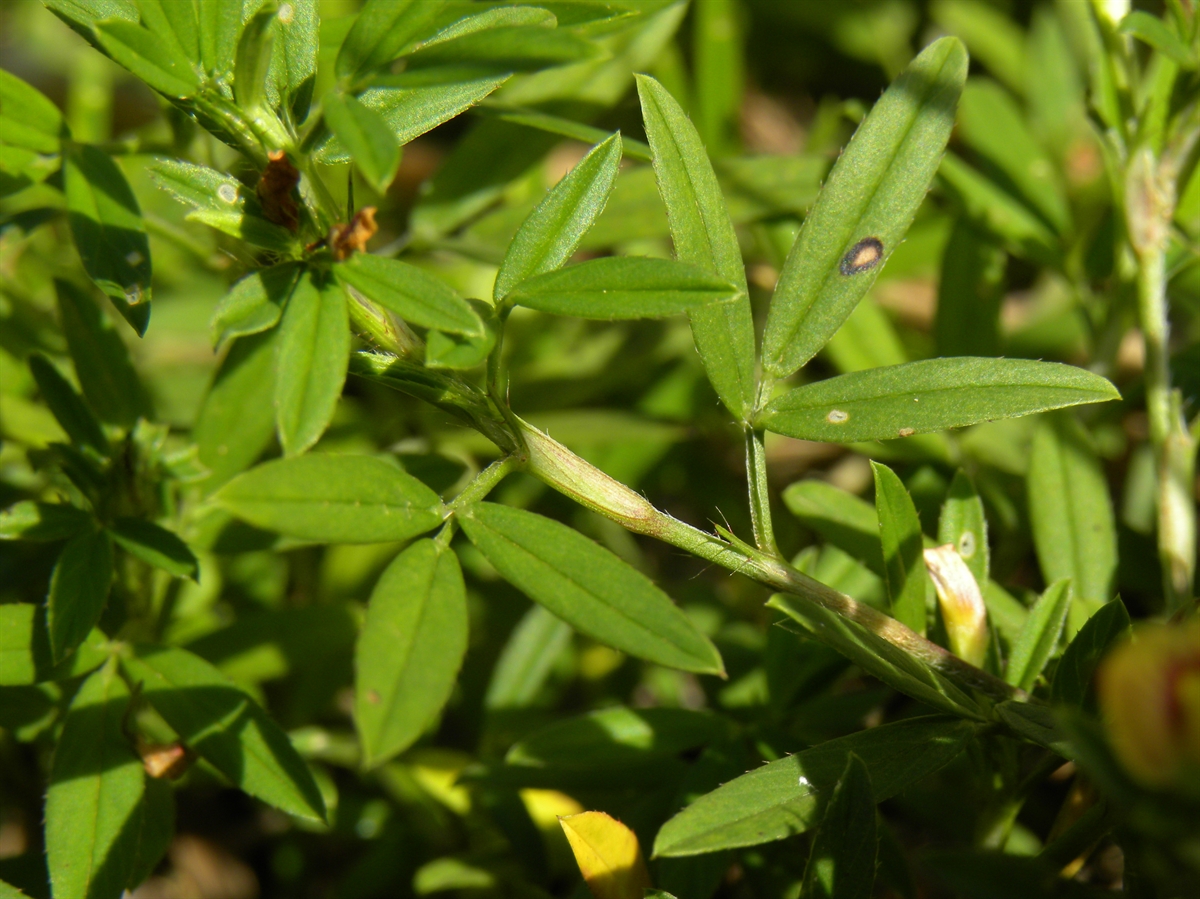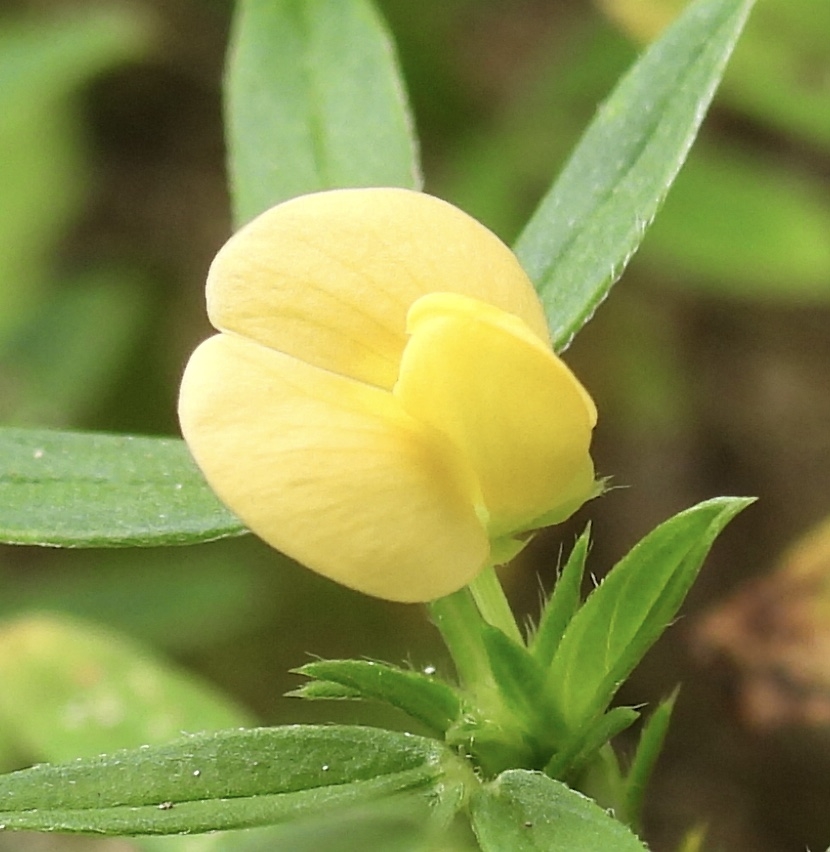Habit: Stylosanthes hamata grows as a low, creeping ground cover to low shrub up to 50 cm in height. The trifoliate leaves are arranged alternately. The leaflets are to 2 cm in length, lanceolate, with an obtuse leaf apex and entire margin. The petiole has two stipules at its base. The vegetative parts of the plant are often covered in sericeous or pilose pubescence.
Stylosanthes hamata is monoecious. The incomplete, imperfect, flowers are arranged in spikes. The staminate flowers have 5 fused sepals in the calyx and 5 orange petals in the corolla; the lower 2 petals are fused to form a keel and the upper petal is enlarged forming a standard. There are 10 stamens and no ovary. In carpellate flowers the calyx is reduced to 2 sepals, the corolla has 4 petals and there are no stamens;the ovary is superior with a single locule. The fruit is a 2-parted legume that is highly constricted between the 2 seeds.
Habitat: Stylosanthes hamata primarily occurs in Human Altered environments (yards and roadsides) and around the edges of ephemeral Fresh Water Wetlands.
Distribution: Stylosanthes hamata occurs on all island groupings in the Lucayan Archipelago well as south Florida, the Caribbean region and Central and northern South America. It is now occurring throughout the world in other tropical and subtropical regions.
Medicinal/Cultural/Economic usage: Stylosanthes hamata is not known to be used medicinally in the Lucayan Archipelago.
Stylosanthes hamata is used as feed for livestock in Africa and India and in other tropical and subtropical areas.



